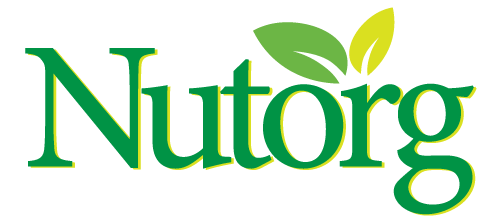
Analysis of the Cerium Oxide Nanoparticles Market (2024-2032)
The global cerium oxide nanoparticles market size stood at a value of around USD 0.74 billion in 2023. The market is further expected to grow at a CAGR of 14% in the forecast period of 2024-2032, aiming to reach a value of USD 2.42 billion by 2032. This remarkable growth can be attributed to the increasing applications of cerium oxide nanoparticles across various sectors, including energy storage, polishing, personal care, and pharmaceuticals. In this blog post, we’ll explore the dynamics of the cerium oxide nanoparticles market, focusing on its size, applications, regional analysis, market dynamics, and competitive landscape.
1. Market Overview
1.1 Definition of Cerium Oxide Nanoparticles
Cerium oxide nanoparticles (CeO₂ NPs) are nanoscale particles of cerium oxide that exhibit unique properties such as high oxygen storage capacity, chemical stability, and catalytic behavior. These characteristics make them highly sought after in various applications, ranging from catalysis to biomedical uses.
1.2 Historical Market Trends
The cerium oxide nanoparticles market has experienced steady growth over the last decade. Factors such as advancements in nanotechnology, increasing demand for energy-efficient materials, and growing awareness of the benefits of nanomaterials have driven this growth. As industries continue to innovate, the demand for cerium oxide nanoparticles is expected to rise, propelling the market further.
2. Market Size and Forecast
2.1 Current Market Size (2024)
As of 2024, the cerium oxide nanoparticles market is projected to witness significant growth. With a current market valuation of approximately USD 0.74 billion, the stage is set for a robust expansion, fueled by increasing applications and innovations in production techniques.
2.2 Forecast to 2032
The market is anticipated to grow at a compound annual growth rate (CAGR) of 14%, driven by diverse applications in industries such as energy storage, polishing agents, personal care, and pharmaceuticals. By 2032, the cerium oxide nanoparticles market is expected to reach USD 2.42 billion. Factors influencing this growth include technological advancements, increasing investment in research and development, and expanding industrial applications.
3. Application Segmentation
3.1 Energy Storage
One of the primary applications of cerium oxide nanoparticles is in energy storage systems, particularly in advanced batteries and supercapacitors. Their high oxygen storage capacity enhances the efficiency and lifespan of energy storage devices, making them vital for renewable energy solutions.
3.2 Polishing Agent
Cerium oxide is widely used as a polishing agent for glass and other materials due to its excellent abrasive properties. The increasing demand for high-quality polished surfaces in various industries, including automotive and electronics, is driving its market growth.
3.3 Personal Care
In the personal care sector, cerium oxide nanoparticles are being incorporated into cosmetics and skincare products for their antioxidant properties. Their ability to scavenge free radicals makes them an attractive ingredient for formulations targeting skin aging and protection.
3.4 Pharmaceuticals
The pharmaceutical industry is witnessing a rise in the use of cerium oxide nanoparticles for drug delivery systems and diagnostic applications. Their biocompatibility and ability to enhance the efficacy of drug formulations are key drivers for their adoption in this sector.
3.5 Others
Additional applications of cerium oxide nanoparticles include their use in environmental remediation and catalysis, where they help in the degradation of pollutants and enhance catalytic reactions.
4. Regional Analysis
4.1 North America
The North American market for cerium oxide nanoparticles is robust, driven by significant investments in research and development, along with the presence of leading market players. The U.S. and Canada are major contributors to this market, focusing on technological innovations and sustainable practices.
4.2 Europe
Europe is witnessing increased regulatory focus on nanomaterials, which impacts the cerium oxide nanoparticles market. Countries like Germany and the UK are leading in research initiatives, particularly in the fields of energy and pharmaceuticals.
4.3 Asia-Pacific
The Asia-Pacific region is expected to experience the highest growth rate in the cerium oxide nanoparticles market, driven by rapid industrialization and urbanization in countries like China and India. The region’s expanding manufacturing base and increasing consumer demand for personal care products are significant contributors.
4.4 Latin America and Middle East & Africa
Emerging markets in Latin America and the Middle East & Africa are slowly adopting nanotechnology, presenting opportunities for market growth. Investment in renewable energy and technological innovations in these regions are likely to boost demand for cerium oxide nanoparticles.
5. Market Dynamics
5.1 SWOT Analysis
- Strengths: Unique properties of cerium oxide nanoparticles, diverse applications, and technological advancements.
- Weaknesses: High production costs and regulatory challenges.
- Opportunities: Growing demand in renewable energy and pharmaceuticals, expanding applications in emerging markets.
- Threats: Competition from alternative materials and economic fluctuations.
5.2 Porter’s Five Forces Analysis
- Competitive Rivalry: Moderate to high, with several key players competing for market share.
- Threat of New Entrants: Moderate, as capital requirements and technology expertise can be barriers.
- Bargaining Power of Suppliers: Low, due to the availability of multiple sources for raw materials.
- Bargaining Power of Buyers: Moderate, as buyers have options but specialized applications may limit choices.
- Threat of Substitutes: Moderate, with emerging materials posing a potential threat.
6. Key Indicators for Demand
Factors influencing demand include economic conditions, industrial growth rates, and advancements in technology. The increasing focus on sustainability and environmental responsibility is also a significant driver.
7. Key Indicators for Price
The pricing of cerium oxide nanoparticles is influenced by raw material costs, market competition, and overall economic conditions. Fluctuations in the supply chain can also affect pricing strategies.
8. Value Chain Analysis
The value chain of cerium oxide nanoparticles includes raw material suppliers, manufacturers, distributors, and end-users. Each player plays a crucial role in ensuring the product’s quality and availability in the market.
9. Competitive Landscape
9.1 Major Players
Leading companies in the cerium oxide nanoparticles market include manufacturers such as American Elements, NanoResearch Elements, and EPRUI Nanoparticles & Microspheres. These companies are focused on innovation and expanding their product offerings.
9.2 Recent Developments
Recent mergers and acquisitions, alongside strategic partnerships, are shaping the competitive landscape. Companies are investing in research to enhance product performance and explore new applications.
9.3 Market Share Analysis
The market share is dominated by a few key players, but numerous small and medium enterprises are emerging, creating a dynamic competitive environment.
